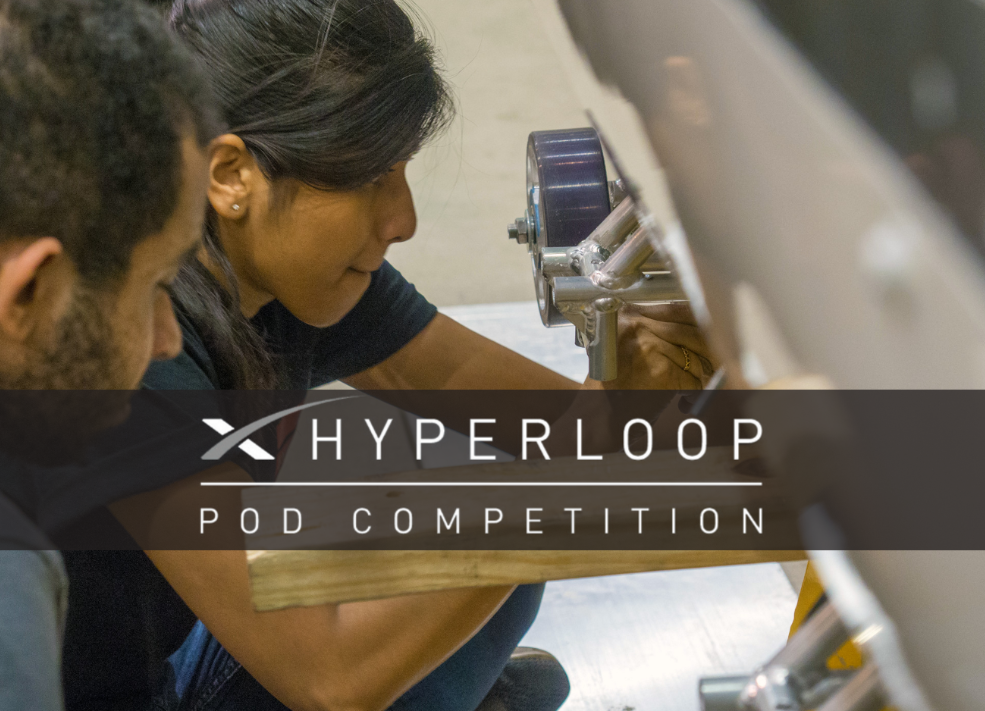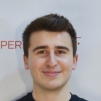Latest Magazine
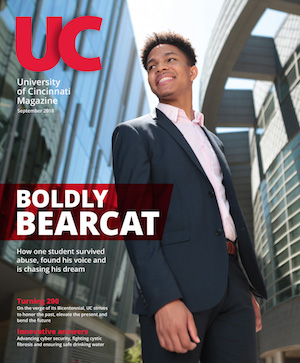 September 2018
September 2018
Boldly Bearcat
Finding his voice
Danger in the tap
Virtual defense
Global game changer
Celebrating UC's Bicentennial
 Past Issues
Past Issues
Browse our archive of UC Magazine past issues.
What We Do
Our staff of professionals serves as communications consultants, promoting the university and serving as a liaison between the news media and the university community. We are the officially designated office for the university to communicate to the public at large through the mass media.
Media Contacts
Public Records Policy

Hyperloop UC
A team of University of Cincinnati students was on the ground in Hawthorne, California, as they took on the world’s brightest engineers in a high-stakes competition to reinvent transportation.
On Sunday, Jan. 29, 2017, Hyperloop — a tube-based passenger concept that involves rocketing pods of people between cities at the speed of sound — took a major step forward when teams from as far away as Japan and the Netherlands shared their concepts with the world. Three teams even sent their prototype pods barreling through a mile-long test track.
Students are contributing toward a novel technology that would allow travel and shipping at roughly 200 mph faster than commercial airliners, an advance that effectively would allow passengers to live 400 miles from work and still commute in under 40 minutes. Think Cincinnati to New York in under an hour. The travel pod could achieve such high speeds because it floats in a vacuum inside the tube.
UC Magazine has been along for the ride as 30 students from Hyperloop UC travelled to SpaceX, the corporation headed by billionaire inventor Elon Musk, who dreamed up the open source pod contest that drew more than 1,200 entries. Just 30 teams (one dropped out) advanced beyond the design weekend in Texas a year ago and were invited to build, and now test, their pods during competition weekend Jan. 27-29.
In the final test, qualifying pods were loaded into the mile-long 6-foot diameter de-pressurized steel Hypertube, then fired forward by a “pusher” as teams waited to see if their design held up under stress and stopped before the end of the track.
Follow our coverage as we share a behind-the-scenes look at UC’s team, their creation and the culmination of an adventure that started 18 months ago when a single UC student was inspired by Musk’s notion to improve transportation.

Sun sets on Hyperloop UC's journey (for now)
UC students gather by the sea for team photo, but they're already looking ahead to next competition in June
Jan. 30, 2017

Sunset off the Redondo Beach pier. photos/Jay Yocis
Many members of the team have been in California for 10 straight days working nonstop to perfect their prototye for the SpaceX Competition Weekend that ended yesterday.
Most spent little time enjoying the sights of the Golden State, so a team photo at sunset in Redondo Beach seemed a perfect and rewarding end to an incredible, though exhausting, journey. Ironically, however, most of them arrived after sunset as they had a last-minute opportunity to run some final tests on their pod and gather data at SpaceX. They took the chance and ran late for the shoot.
Tests went well, and everyone was looking ahead at UC's opportunity to re-enter the next phase of the SpaceX competition in the summer of 2017.
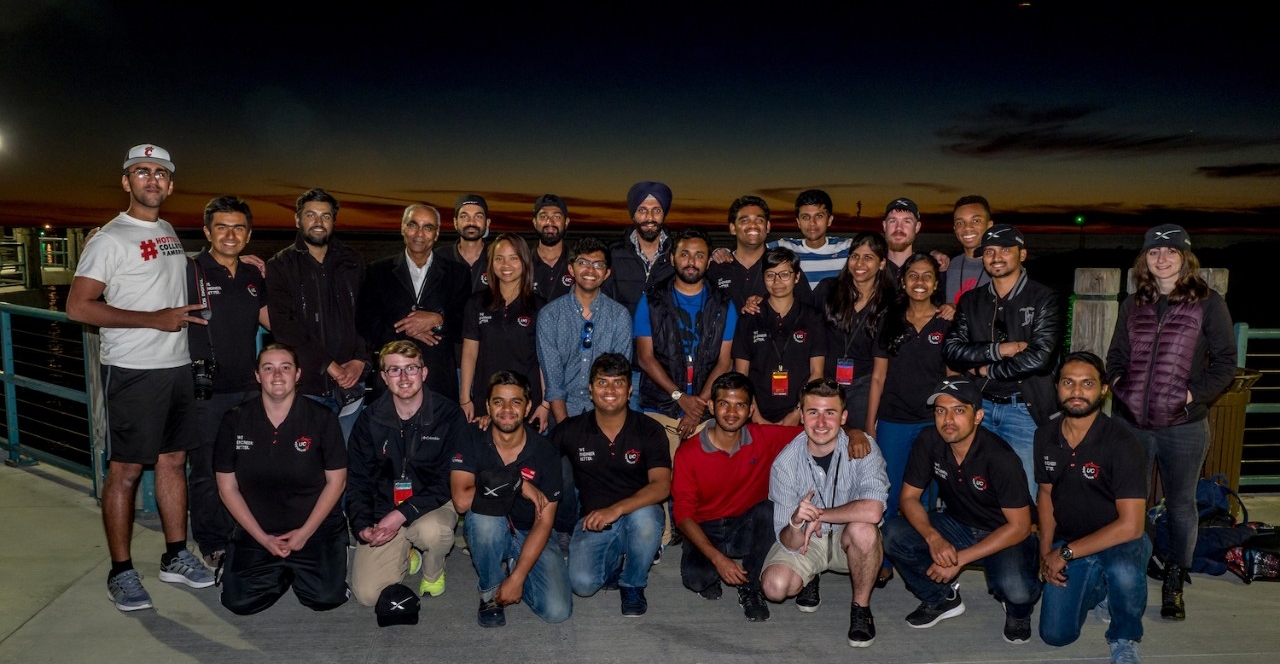
Hyperloop UC team gathers at the Redondo Beach pier.
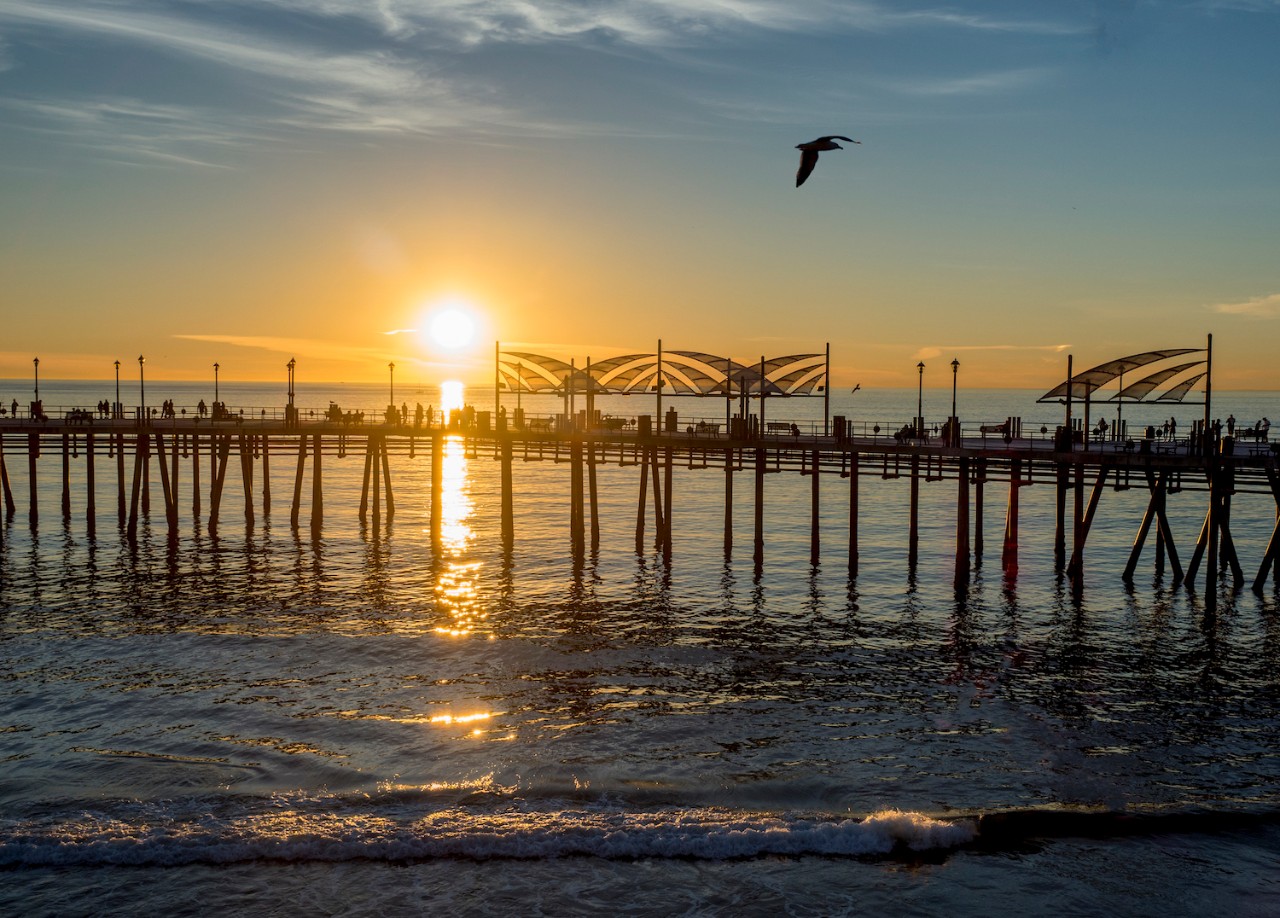

Impressing Elon
Incredible experiences at Hyperloop Competition Weekend
Jan. 29, 2017
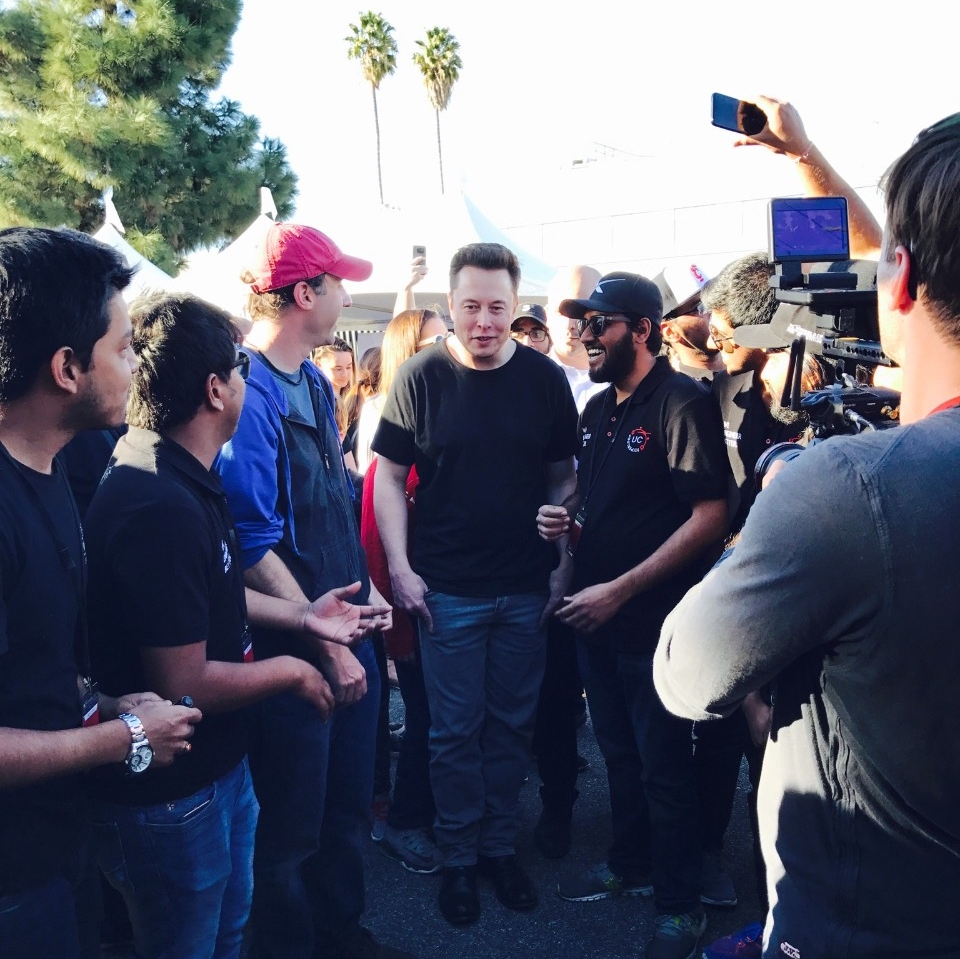
Elon Musk visits UC student and team captain Dhaval Shiyani and the rest of the Hyperloop UC team during Competition Weekend. photo/Siddharth Sridhar
by John Bach
513-556-5224
While the competition to invent a brand new mode of transportation ended a day earlier than Hyperloop UC hoped, the journey University of Cincinnati students have been on has been incredibly transformative.
Team members were upbeat on the final day of competition Jan. 29 despite not qualifying to run their prototype through the Hypertube. The day still included plenty of lasting memories, and none more exciting than when Elon Musk — the CEO of SpaceX who dreamed up the Hyperloop concept —dropped by UC’s display tent to see their work.
For team captain Dhaval Shiyani, it was a full-circle moment. He had gotten hooked on the Hyperloop idea when he read Musk's white paper nearly two years ago. Then, after assembling a team who built a prototype, he got to shake Musk's hand and thank him for "igniting the fire that started all of this."
Just three teams were allowed to perform a test in the tube in a vacuum environment. Those were Delft Hyperloop (Delft University from the Netherlands), Warr Hyperloop (Technical University from Munich, Germany) and MIT Hyperloop (Massachusetts Institute of Technology). Delft took home the top award for best overall score, and Warr Hyperloop was awarded for top speed (94 km/h).
SpaceX organizers were thrilled at the performance of both the pods and the tube during the first-ever experiment as the world found out that the concept truly is a viable idea.
SpaceX recorded the test runs with cameras inside the mile-long Hypertube.

End of the line for Hyperloop UC team
— 12:25 p.m. (Pacific Time) Jan. 29, 2017
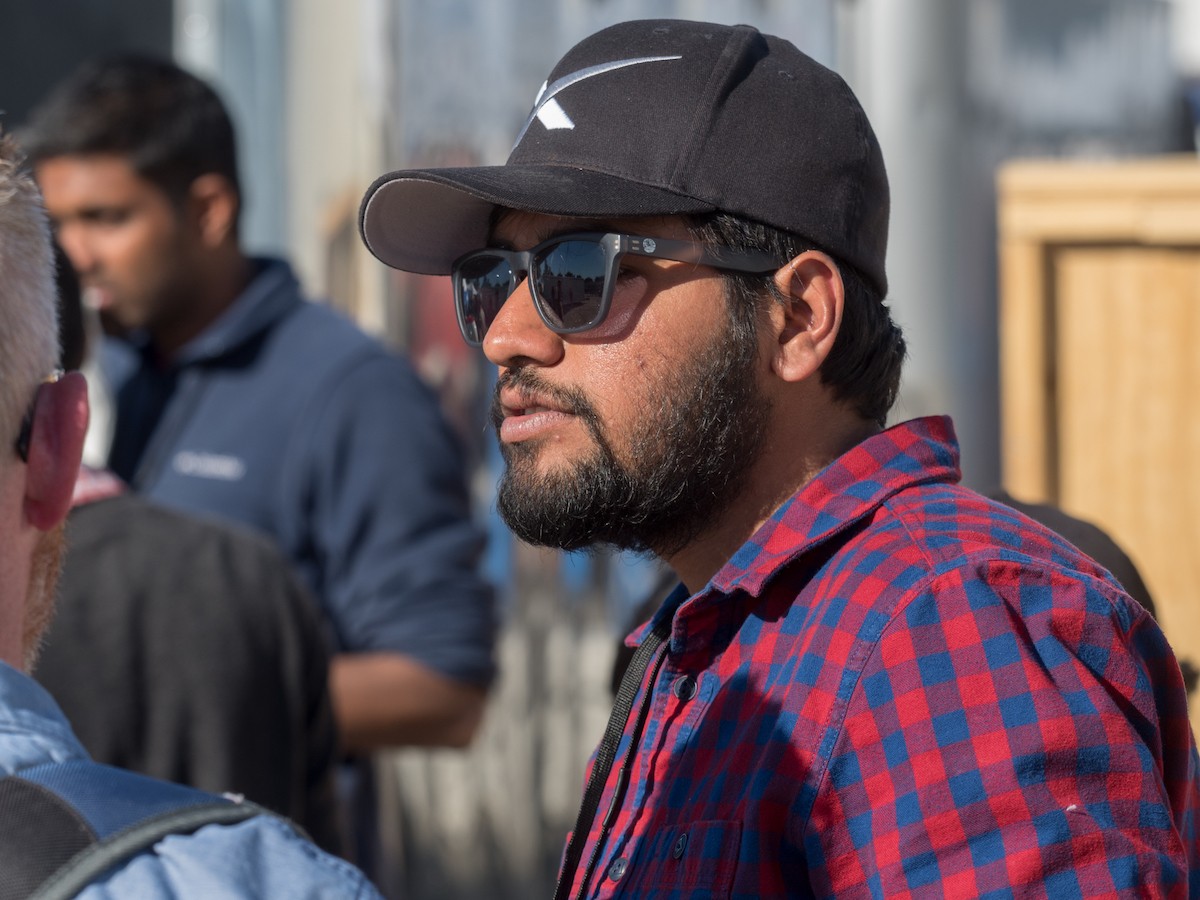
Hyperloop UC team captain Dhaval Shiyani said the team is struggling today with the news, but they are proud of the advances they've accomplished with their prototype. photos/Jay Yocis
Sad news for Hyperloop UC this morning from Hawthorne, California. Our Bearcats simply ran out of time today to pass final testing to be approved for the mile-long Hypertube at SpaceX.
"Everyone is disappointed right now," says UC team captain Dhaval Shiyani. "There was a lot of hope, but I'm very sad and sorry. I'm still very proud of all we have accomplished. We have learned a lot, but this is a tough problem to solve."
Shiyani, like any good researcher, said all they have learned and all the data they've gathered will inform UC's next entry since SpaceX will host another pod competition this summer.
"We tried our best, and we'll keep going," he says.
Just three of the 29 finalist teams passed all of the stringent tests to qualify for the opportunity. Those teams are Delft University from the Netherlands, Technical University from Munich, Germany, and the Massachusetts Institute of Technology from the US.
The UC squad will still have the opportunity to display their prototype as well as take part in the entire day at SpaceX. Stay tuned, as we'll be following the pod competition today.

Learn about all 29 competing teams
— Jan. 29, 2017
The finale of the SpaceX Hyperloop Pod Competition Weekend starts today, so it's the perfect time to learn more about the 29 teams from around the world who are chasing after an opportunity to transform transportation.
David Chen from Japan's Keio Alpha team explains why they went with a mini-pod for the SpaceX Hyperloop pod competition. Video/Jay Yocis

Sharing good news via Facebook Live
— Jan. 28, 2017
Our team caught an encouraging turnaround for Hyperloop UC as they made progress with a last-minute fix in hopes of moving on to the next round of testing at SpaceX.

Describing the most difficult moment to date
— Jan. 28, 2017
Hyperloop UC's Siddharth Sridhar, director of control systems, describes the most difficult moments yet for the team after 18 months of work to get here.

Near-devastating loss requires overnight scramble
— Jan. 28, 2017
The team discovered late on Friday that an actuator controller had broken, a loss that would potentially derail their hard work and even preclude them from entering the Hypertube on Sunday.
With no time to order a replacement, the crew removed parts and took them back to their Airbnb to pull an all-nighter working on workarounds and solutions.
Listen to student Vignesh Jayakumar describe the overnight scene below.

View the full mile-long Hypertube at 20 mph
— Jan. 28, 2017
This is the full mile-long Hypertube that SpaceX constructed for the Hyperloop Pod competition finale on Sunday, Jan. 29, 2017. This was shot at 20 mph.
On Sunday, the pods could be moving 10x as fast in excess of 200 mph. Once in the market, pods are expected to hit at least 700 mph.

A Hyperloop legend and a sweet ‘stache
— Jan. 28, 2017
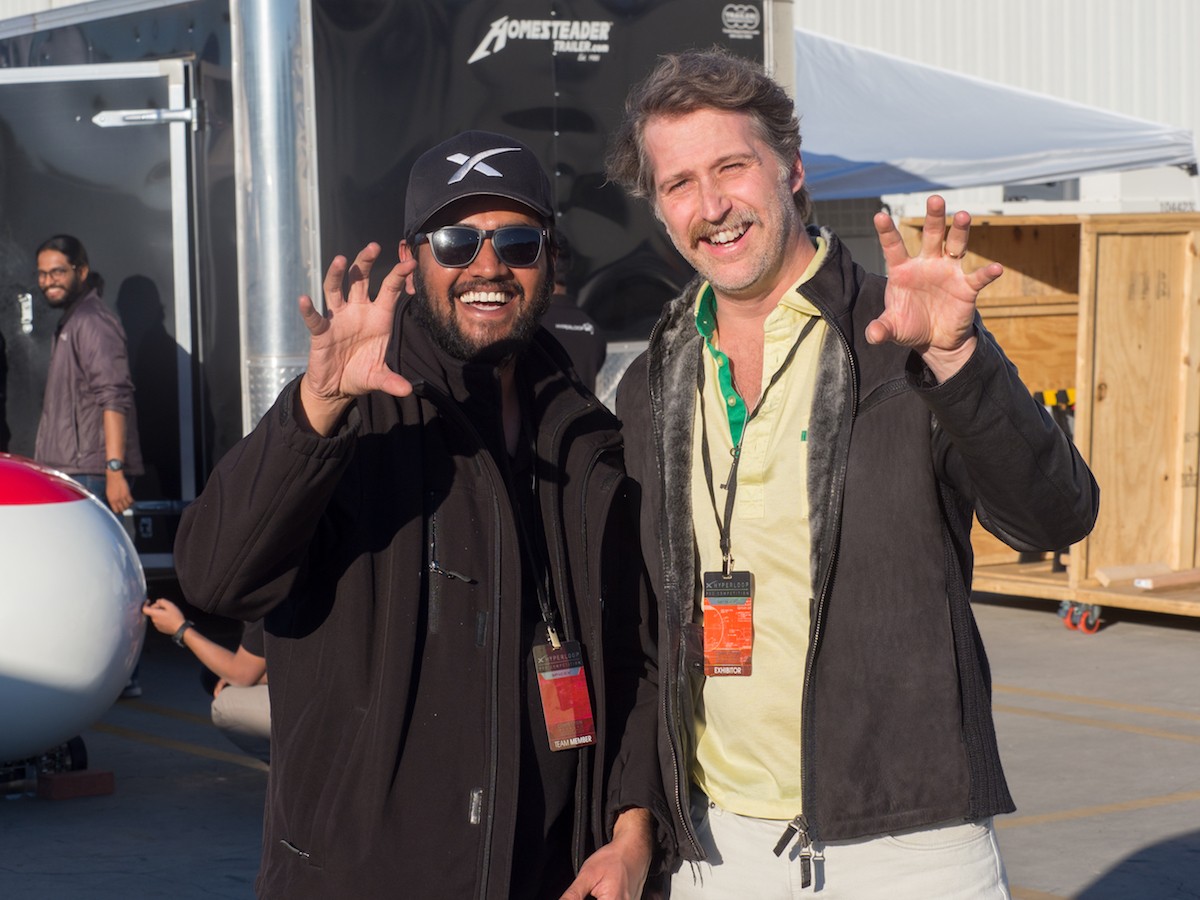
Hyperloop UC team captain Dhaval Shiyani and aerospace legend Brogan BamBrogan show off their fierce Bearcat claws. photo/Jay Yocis
by John Bach
For a ton of Hyperloop UC students, the highlight of Friday was meeting a legend.
Not only does he have an incredible name and a great mustache, but Brogan BamBrogan co-founded Hyperloop One, a firm leading efforts to commercialize the transportation alternative. Equally as impressive, he was an early team member of SpaceX and spent nearly 10 years as a senior staff engineer of propulsion and helped lead such advances as the Falcon 1 rocket and Dragon spacecraft.
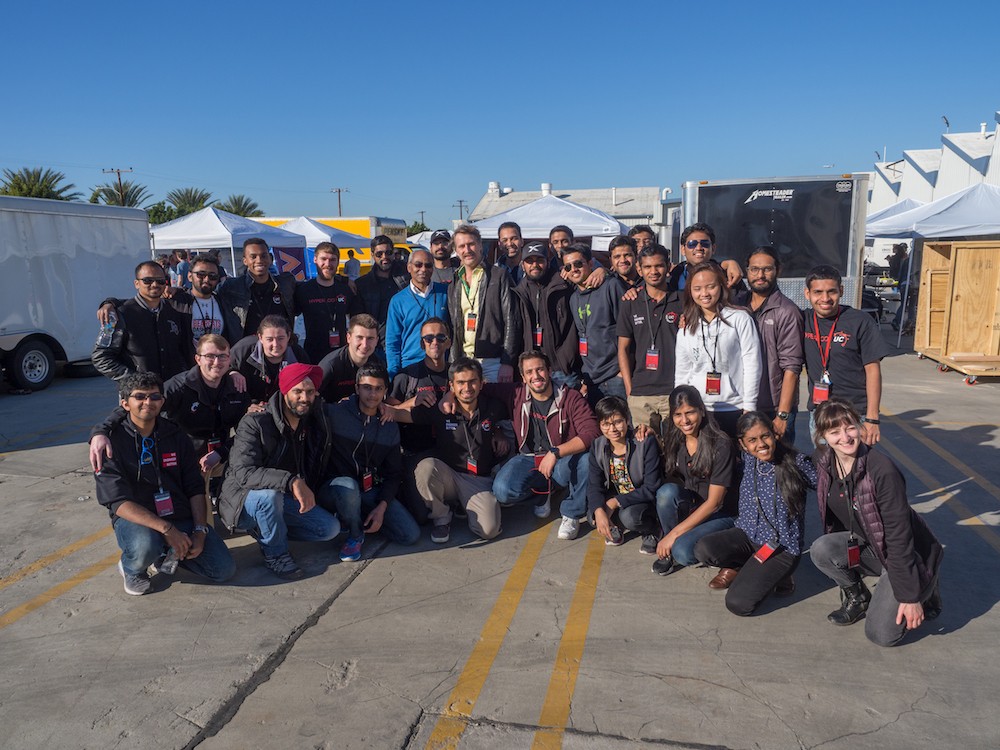
The Hyperloop UC team crowds around Brogan BamBrogan (center). photos/Jay Yocis
Back then, he went by Kevin Brogan, or more commonly “K-Bro.” According to Business Insider, he legally changed his name in 2015 after marrying a woman named Bambi Liu. Rather than hyphenate, the couple chose to merge names. She became Bambi BamBrogan, and he, well, Brogan BamBrogan.
Brogan toured the pod prototypes at SpaceX on Friday and was more than happy to chat up the UC team and pose for pictures.
The fierce Bearcat claws pose was his idea.
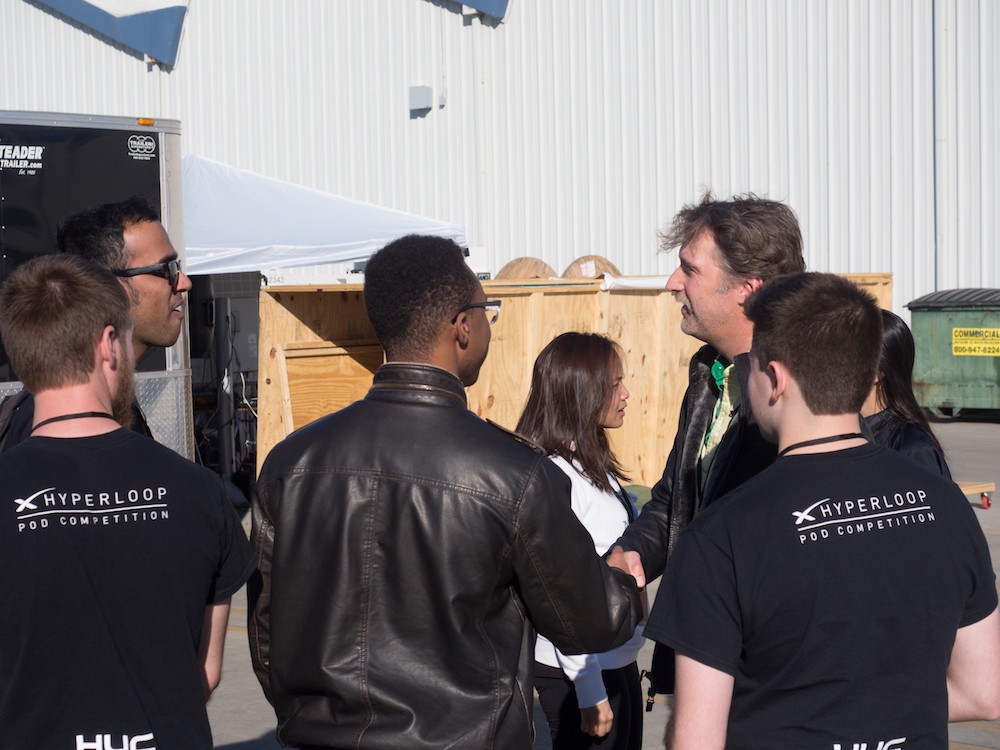
DAAP student designer Julian Gregory shakes hands with Brogan BamBrogan.

Tense day of testing for Hyperloop UC
— Jan. 27, 2017
The grounds of SpaceX were abuzz in nervous excitement on Friday as Hyperloop teams from across the globe began preliminary rounds of testing of their pods.
For the University of Cincinnati’s Hyperloop UC team, it was a stress-filled day in which they passed several major technical hurdles yet also suffered some mechanical failures that will require a quick fix prior to Sunday’s finale.
Read the full story and watch more video updates.

Crosstown Shootout game watch with LA alumni
— Jan. 27, 2017
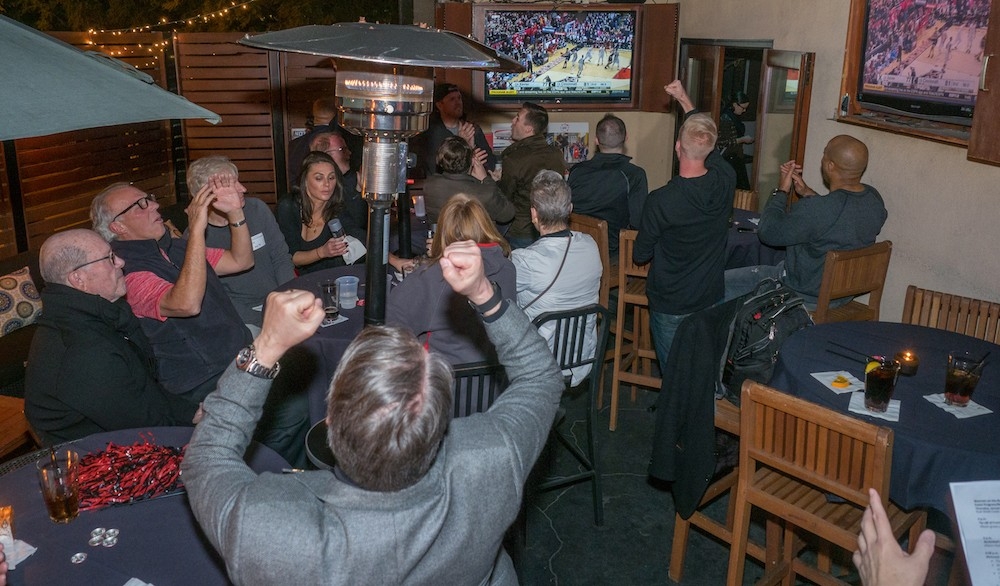
Combine the excitement of a big win for the Bearcats over Xavier in the Crosstown Shootout with a special appearance by the Hyperloop UC team, and UC grads from Southern California enjoyed a special night during the UC Alumni Association's gathering at Rush Street in Culver City last night.

Meet the team
— Jan. 26, 2017
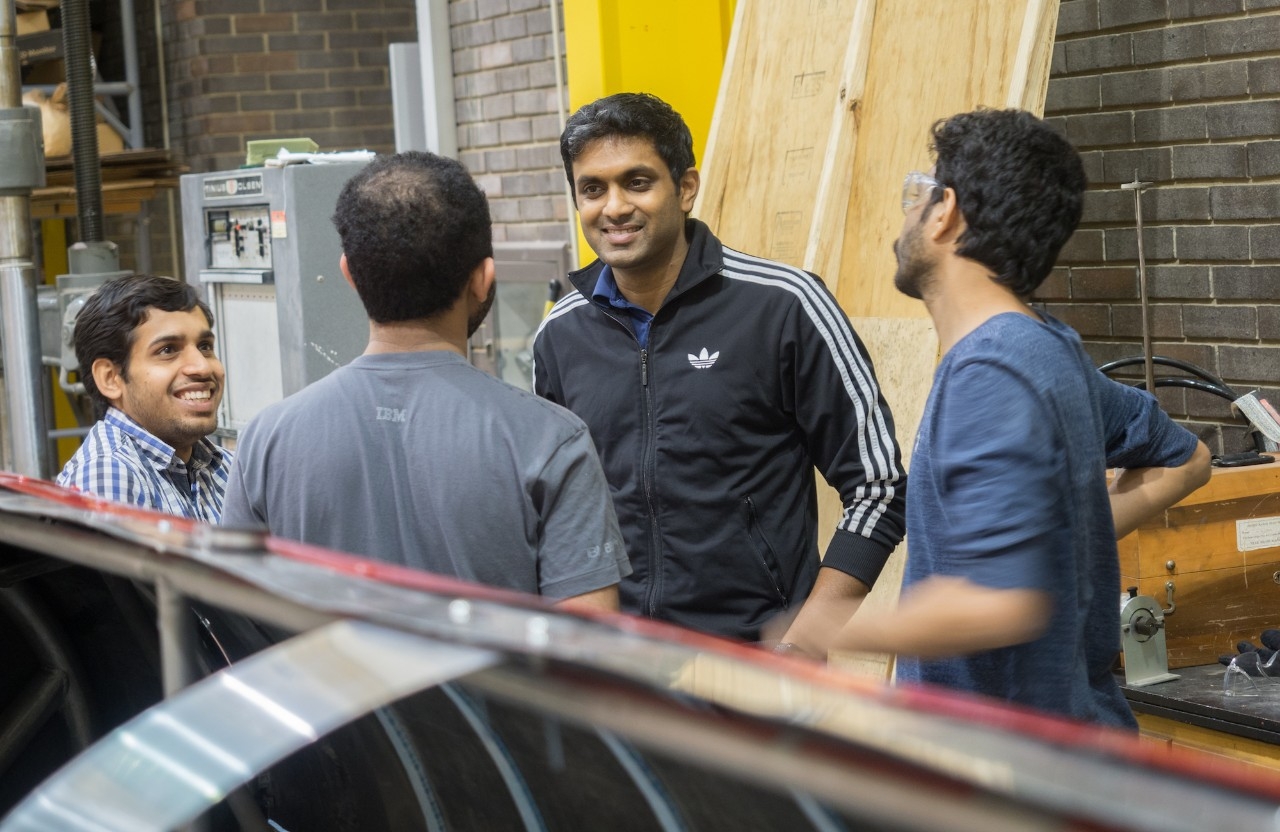
Hyperloop UC started with a single student getting inspired over Elon Musk's big idea to improve transportation. It became something much bigger on campus. Read about the mostly international team that became a world finalist.
Check out the story

Second wave of Hyperloop team en route to LA
— Jan. 25, 2017
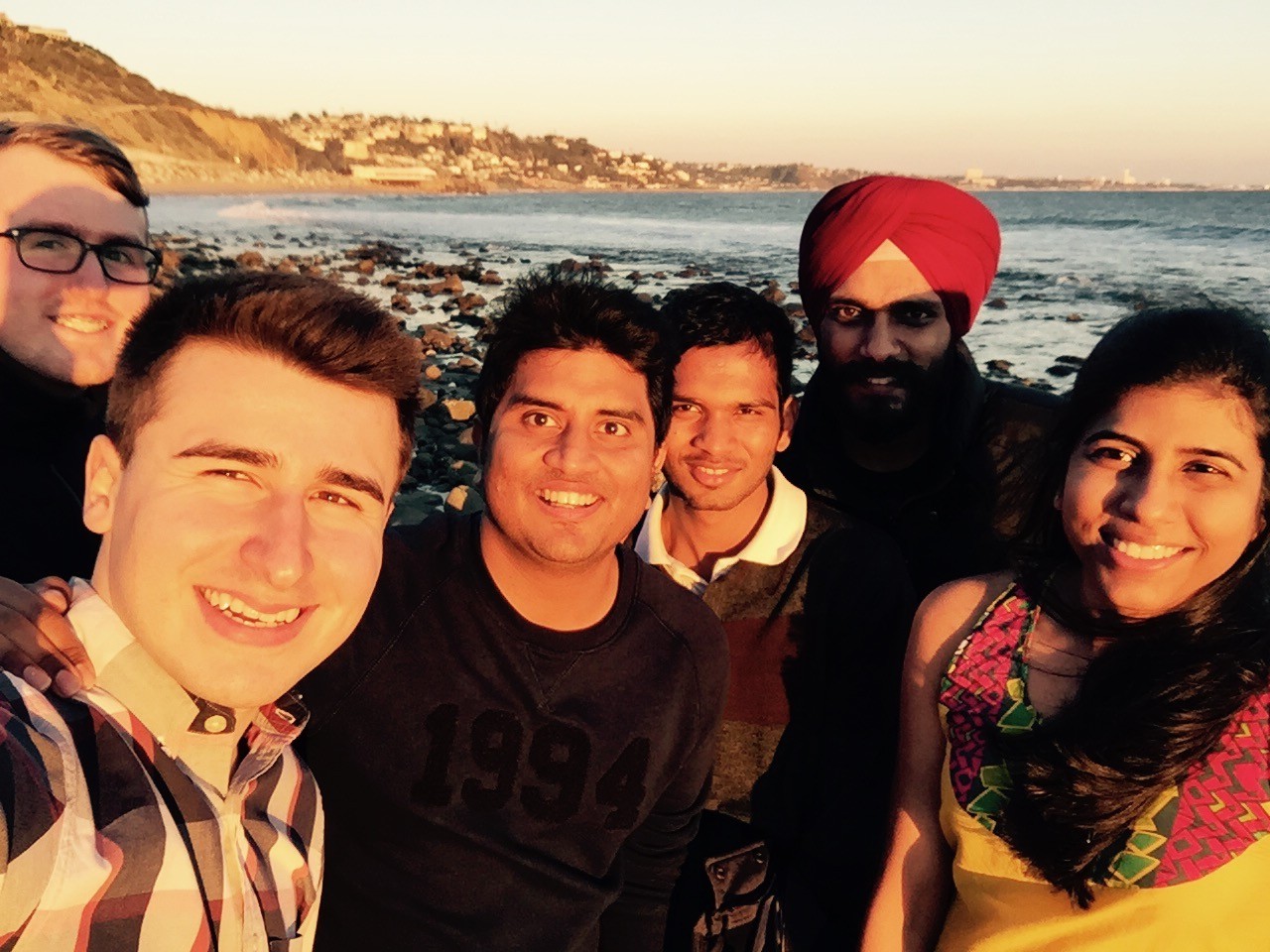
With all students from Hyperloop UC on the ground in California, the group can get to work making final preparations for Competition Weekend.
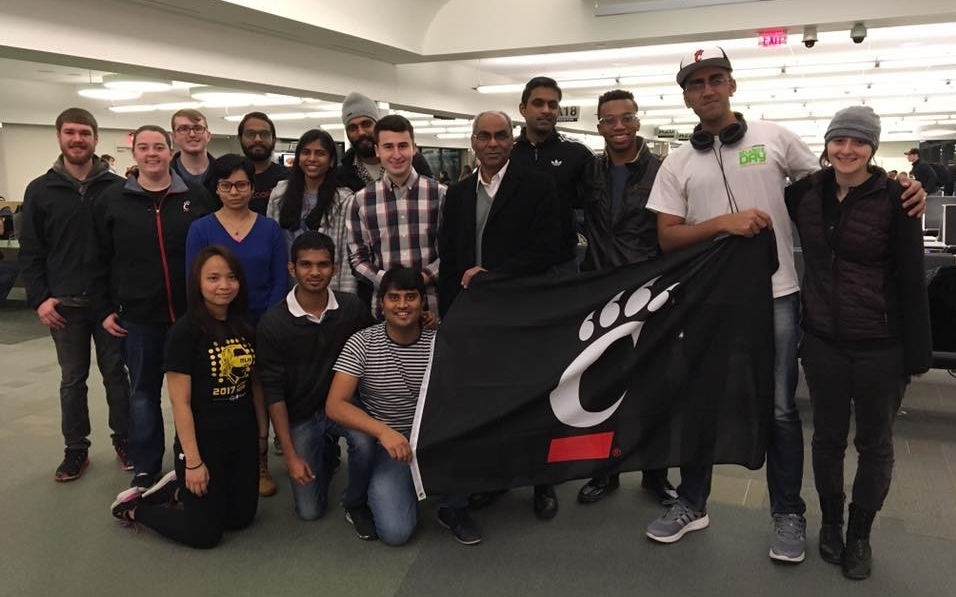
The remaining half of Hyperloop UC is flying in Jan. 25.
These University of Cincinnati students and their advisor are flying into Los Angeles International Airport from Cincinnati today to join the first group of Hyperloop UC students who have been on the west coast since Jan. 21.
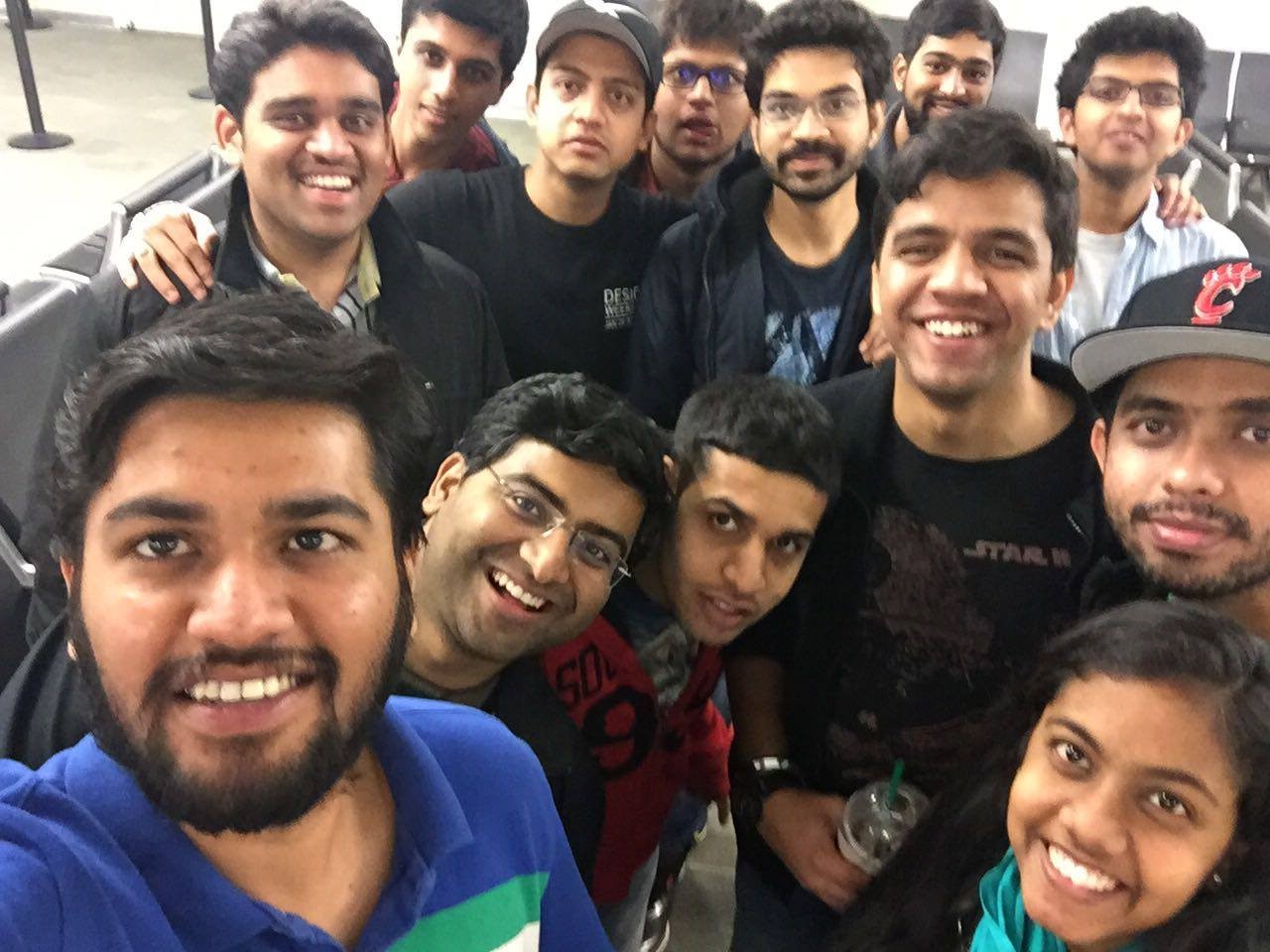
Hyperloop UC's first group of students arrived in California on Jan. 21.
Together, they'll continue preparations for Competition Weekend at SpaceX, which begins Jan. 27. UC's team includes students from across several colleges. Most are from the College of Engineering and Applied Science, but the group also includes at least one student from the Lindner College of Business as well as the College-Conservatory of Music, who are assisting with the business and communications side of the project.
Arriving at SpaceX will be sweet relief for the entire group considering many have been pouring so much time, effort and energy into their Hyperloop prototype for almost 18 months.

Hyperloop UC's founding student shares genesis
— Jan. 24, 2017
Dhaval Shiyani was working the graveyard shift at a UC residence hall when he stumbled upon Elon Musk's original Hyperloop white paper. Over the next eight hours, he fell in love with the concept and was inspired to pursue the technology.
About 18 months later, Dhaval and 29 other UC students would be at SpaceX with their own Hyperloop prototype in tow.
Listen to Dhaval's description of how it all started below.

Crating and shipping the prototype
— Jan. 19, 2017

Hyperloop UC team members escort a crated prototype across campus. photos/Jay Yocis
Members of the Hyperloop UC team carefully crated their 15.5-foot prototype and escorted it from the high bay of UC's Rhodes Hall, down MainStreet to the dock near the Engineering Research Center, where it was loaded into the back of a truck.
Team organizers estimate it will take three days to transport by truck from Cincinnati to Hawthorne, California, a 2,215-mile journey. The first wave of 15 UC students are flying into Los Angeles International Airport on Saturday, Jan. 21. The second wave of 15 students will join them on Thursday, Jan. 25.
The pod's trip to SpaceX is the second such journey, as it made a similar trip for preliminary testing in November. More images

A UC send-off
— Jan. 18, 2017

Students, faculty and administrators involved with Hyperloop UC took to the court at halftime Jan. 18 to be recognized during the Bearcats men's basketball game.
"From day one, Hyperloop UC has embodied the college and the university’s spirit of innovation and entrepreneurship," says University of Cincinnati College of Engineering and Applied Science Dean Teik Lim (at far left). "We’ve enjoyed taking this journey with them, watching them design, prototype, redesign and prototype again, until they successfully achieved their vision — it has been most exciting.
"I applaud the members of this team, every engineer, designer and marketer. They have all come together to show the world what UC can do. And what they can do.. is truly phenomenal. I wish them much success in the final round.”

Team photo day
— Jan. 18, 2017
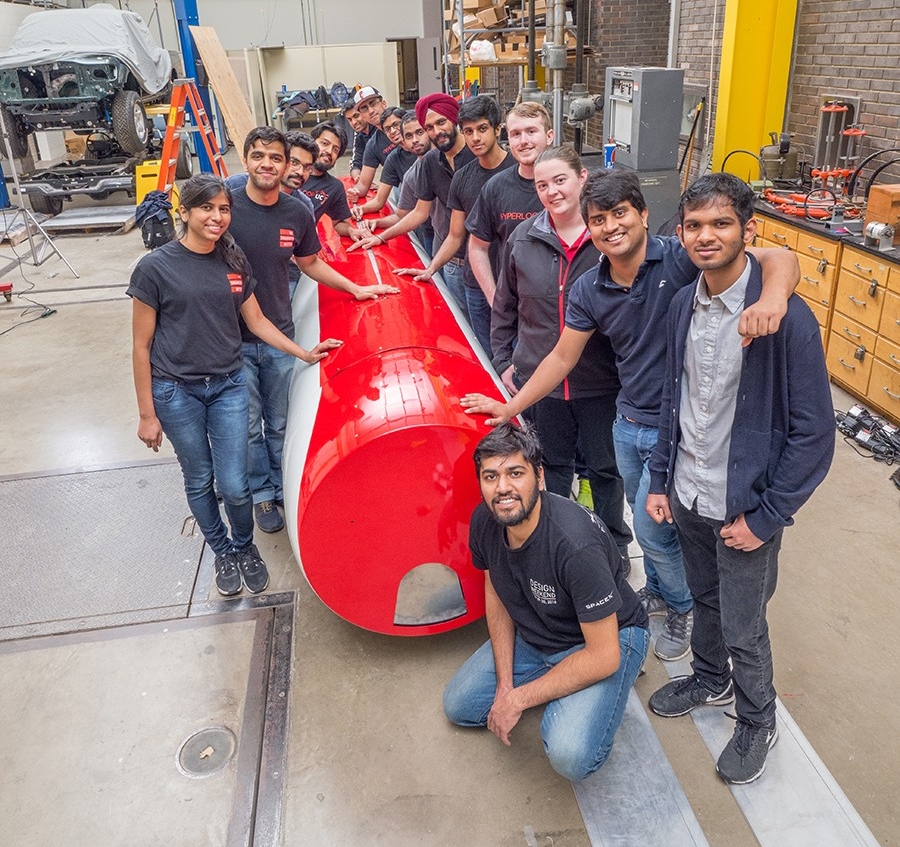
Some of the Hyperloop UC team members with their pod in the Rhodes Hall High Bay at UC. photo/Jay Yocis
The Hyperloop UC team was happy to pause for team photos. Many had worked day and night to reassemble their prototype since it had returned to campus after a custom paint job the previous week near Indianapolis.
About 60 UC students — most of them international graduate students from India — have contributed to the team over the last 18 months. Some have graduated while others joined in recent semesters. Throughout that time, engineering graduate student Dhaval Shiyani, kneeling at the end of the pod, has led the group. More images

Final assembly and finishing touches
— Jan. 17, 2017

Hyperloop UC team members make final changes to their prototype after its return from painting.
The Hyperloop UC team has become intimately familiar with the process for assembling their prototype pod. Here, they reassemble the guts of the thing for what they hope is the final time before competition weekend at SpaceX.
The pod had to be completely stripped down so the skin could be shipped off for painting. The last-minute custom paint job created a good deal of stress for team members who worked day and night to put the thing back together again. Team President Dhaval Shiyani, at right, admitted that he'd only slept a total of eight hours the previous three nights when this image was taken.
"I could lay down and sleep on this floor," he said. More images

Follow Hyperloop on Social Media
Project editorial team
About the project
Funded by the College of Engineering and Applied Science, our team will be embedded with Hyperloop UC during their trip to Hawthorne, California, as they take part in Competition Weekend at SpaceX. Our goal is to share daily udates during the trip but also to explore the human elements of this incredible experience and the impact it has on the minds of students who may well carry this technology forward.
Additional credits
This coverage of Hyperloop UC extends well beyond the crew gathering and sharing content on the ground. An entire team from Governmental Relations and University Communications has contributed to this work including designers, web experts, editors and more. Special thanks to Kerry Overstake, Lisa Ventre, Kathy Warden, MB Reilly, Jeremy Martin, Ben Stockwell, Andrew Higley, Alex Lytle, Rebecca Sylvester and Barb Blum.
Media requests
Media interested in covering Hyperloop UC's journey can email john.bach@uc.edu for access to team members, images and video.

